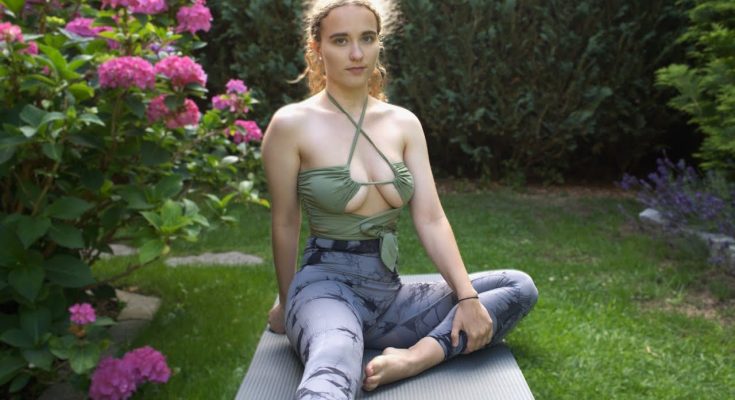Yoga Exercises: A Comprehensive Guide to Physical and Mental Wellness
Introduction
Yoga is more than just a series of poses; it is a holistic practice that connects the mind, body, and spirit. Rooted in ancient Indian philosophy, yoga has become a popular form of exercise worldwide due to its numerous physical, mental, and emotional benefits. Whether you are a beginner or an advanced practitioner, incorporating yoga exercises into your routine can lead to improved flexibility, strength, balance, and mental clarity. This guide explores various yoga exercises, their benefits, and how to integrate them into your daily life.
1. Understanding Yoga and Its Benefits
Yoga combines physical postures (asanas), breath control (pranayama), and meditation to promote overall well-being. The benefits of yoga exercises are extensive, impacting various aspects of health.
Physical Benefits:
- Enhanced Flexibility: Regular practice increases the range of motion in joints and muscles.
- Improved Strength: Many poses require holding the body in specific positions, building muscle tone.
- Better Posture: Yoga promotes body awareness, leading to improved alignment and posture.
- Increased Balance: Balancing poses enhance stability and coordination.
- Pain Relief: Yoga can alleviate chronic pain conditions, including back pain and arthritis.
Mental and Emotional Benefits:
- Stress Reduction: Breathing exercises and meditation help reduce stress and anxiety.
- Improved Concentration: Mindfulness practices enhance focus and cognitive function.
- Emotional Balance: Yoga fosters inner peace and emotional resilience.
2. Essential Yoga Exercises for Beginners
Starting a yoga practice can be both exciting and overwhelming. Here are some fundamental poses to get you started:
Mountain Pose (Tadasana):
- How to Do It: Stand tall with feet together, arms at your sides. Distribute weight evenly and engage your core.
- Benefits: Improves posture and body awareness.
Downward-Facing Dog (Adho Mukha Svanasana):
- How to Do It: From a hands-and-knees position, lift your hips towards the ceiling, forming an inverted V shape.
- Benefits: Stretches the hamstrings, calves, and spine; strengthens the arms and shoulders.
Warrior I (Virabhadrasana I):
- How to Do It: Step one foot forward into a lunge, rotate your back foot slightly, and raise your arms overhead.
- Benefits: Strengthens the legs, opens the hips and chest.
Child’s Pose (Balasana):
- How to Do It: Sit back on your heels, extend your arms forward, and rest your forehead on the mat.
- Benefits: Provides a gentle stretch for the back and promotes relaxation.
Cat-Cow Pose (Marjaryasana-Bitilasana):
- How to Do It: Alternate between arching your back (Cat) and dropping your belly (Cow) while on all fours.
- Benefits: Increases spinal flexibility and warms up the body.
3. Intermediate Yoga Exercises for Progression
As you become more comfortable with basic poses, you can explore intermediate exercises that challenge your strength and flexibility.
Triangle Pose (Trikonasana):
- How to Do It: Stand with feet wide apart, extend your arms, and reach forward to touch your shin or the floor while the other arm points upward.
- Benefits: Stretches the legs, hips, and spine; improves balance.
Bridge Pose (Setu Bandhasana):
- How to Do It: Lie on your back with knees bent, feet hip-width apart, and lift your hips towards the ceiling.
- Benefits: Strengthens the back, glutes, and hamstrings.
Crow Pose (Bakasana):
- How to Do It: Squat down, place your hands on the floor, and balance your knees on your upper arms while lifting your feet off the ground.
- Benefits: Enhances arm strength and balance.
Seated Forward Bend (Paschimottanasana):
- How to Do It: Sit with legs extended, reach forward, and try to touch your toes while keeping your spine straight.
- Benefits: Stretches the spine, hamstrings, and shoulders.
Camel Pose (Ustrasana):
- How to Do It: Kneel on the mat, place your hands on your lower back or heels, and arch your back while looking upward.
- Benefits: Opens the chest and shoulders, improves spinal flexibility.
4. Advanced Yoga Exercises for Mastery
For seasoned practitioners, advanced poses offer opportunities to deepen your practice and push your limits.
Headstand (Sirsasana):
- How to Do It: From a kneeling position, interlace your fingers, place your forearms on the mat, and gently lift your legs overhead.
- Benefits: Improves circulation, strengthens the shoulders and core.
Wheel Pose (Urdhva Dhanurasana):
- How to Do It: Lie on your back, place your hands beside your ears, and lift your body into a backbend.
- Benefits: Strengthens the arms, legs, and spine; opens the chest.
Firefly Pose (Tittibhasana):
- How to Do It: Squat down, place your hands on the floor, and lift your legs off the ground, extending them forward.
- Benefits: Enhances arm strength, balance, and flexibility.
Forearm Stand (Pincha Mayurasana):
- How to Do It: Place your forearms on the mat, kick your legs up, and balance in an inverted position.
- Benefits: Builds shoulder and core strength, improves balance.
Lotus Pose (Padmasana):
- How to Do It: Sit cross-legged, placing each foot on the opposite thigh.
- Benefits: Opens the hips, promotes meditation and relaxation.
5. Incorporating Yoga Exercises into Your Daily Routine
Consistency is key to reaping the benefits of yoga. Here’s how to integrate yoga into your daily life:
Set a Schedule: Dedicate a specific time each day for your practice, even if it’s just 10-15 minutes.
Create a Comfortable Space: Choose a quiet, clutter-free area for your practice.
Use Props: Blocks, straps, and bolsters can help you achieve proper alignment and support.
Follow Online Classes: Utilize online resources, apps, or local studios to guide your practice.
Listen to Your Body: Modify poses as needed and avoid pushing beyond your limits.
6. Yoga Exercises for Specific Goals
Flexibility:
- Poses like Forward Bend, Pigeon Pose, and Butterfly Stretch target tight muscles.
Strength:
- Incorporate Plank Pose, Chaturanga, and Warrior sequences to build muscle.
Balance:
- Practice Tree Pose, Eagle Pose, and Half Moon Pose to enhance stability.
Relaxation:
- Use Restorative poses like Legs-Up-The-Wall, Savasana, and Reclining Bound Angle Pose for stress relief.
7. The Role of Breath and Meditation in Yoga Exercises
Breath control (pranayama) and meditation are integral to yoga, enhancing the physical benefits of the exercises.
Breathing Techniques:
- Ujjayi (Victorious Breath): Promotes focus and relaxation.
- Nadi Shodhana (Alternate Nostril Breathing): Balances energy and calms the mind.
- Kapalabhati (Skull-Shining Breath): Energizes and detoxifies the body.
Meditation Practices:
- Mindfulness Meditation: Focuses on the present moment, reducing stress and anxiety.
- Loving-Kindness Meditation: Cultivates compassion and emotional well-being.
- Body Scan Meditation: Enhances body awareness and relaxation.
8. Common Mistakes and How to Avoid Them
Skipping Warm-Ups: Always begin with gentle stretches to prepare your body.
Forcing Poses: Avoid pushing into discomfort; use props and modifications.
Holding Your Breath: Maintain steady, even breathing throughout your practice.
Neglecting Alignment: Focus on proper alignment to prevent injuries.
Ignoring Rest: Incorporate rest poses like Child’s Pose and Savasana to allow recovery.
9. The Spiritual Aspect of Yoga Exercises
Yoga is not just physical; it’s a journey of self-discovery and spiritual growth. Incorporating elements like chanting, studying yogic philosophy, and practicing gratitude can deepen your connection to the practice.
10. Conclusion
Yoga exercises offer a holistic approach to health, combining physical movement with mental and emotional balance. Whether you seek flexibility, strength, relaxation, or spiritual growth, yoga has something to offer everyone. By incorporating regular practice into your life, you can experience profound benefits that extend beyond the mat, leading to a healthier, more balanced existence.
References
- “The Yoga Bible” by Christina Brown
- “Light on Yoga” by B.K.S. Iyengar
- “The Heart of Yoga” by T.K.V. Desikachar
- Research from the Journal of Alternative and Complementary Medicine
Embark on your yoga journey with an open mind and heart, and discover the transformative power of this ancient practice.



